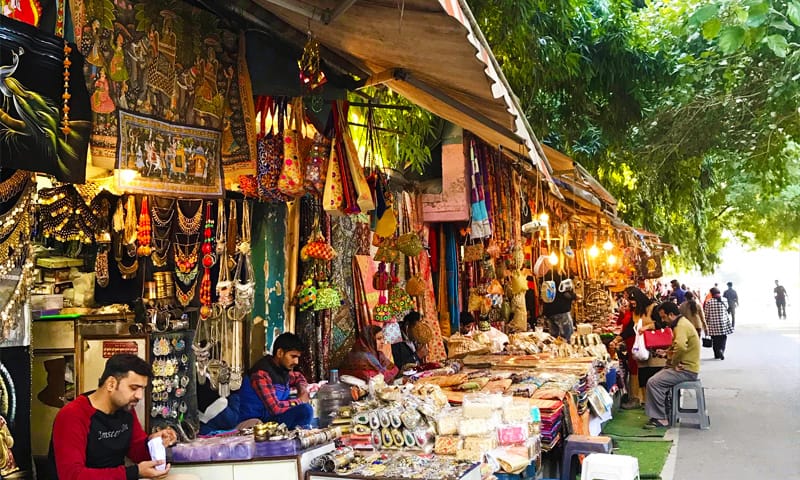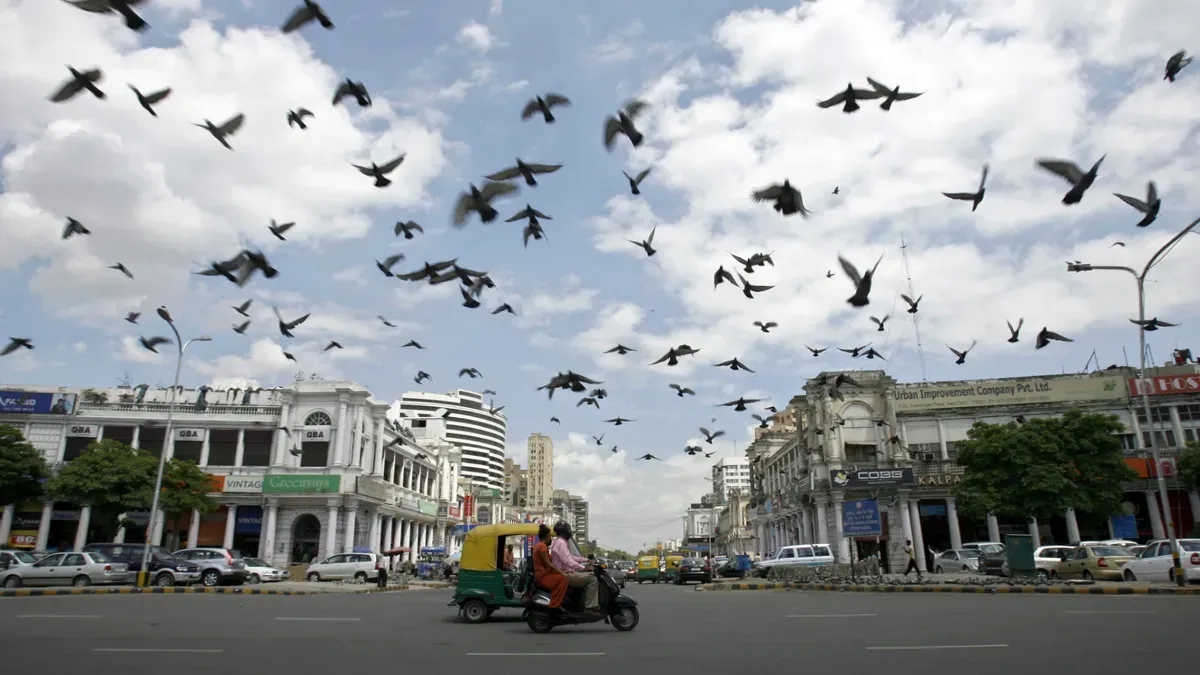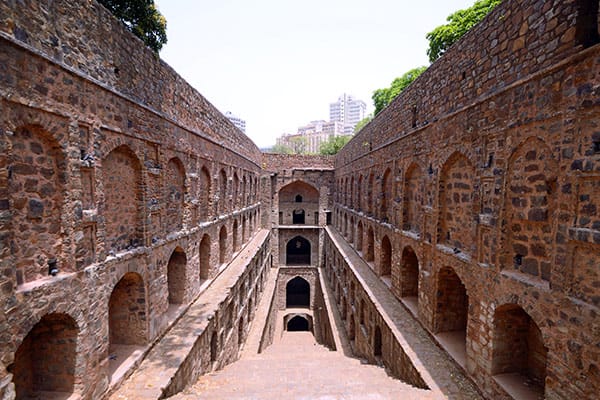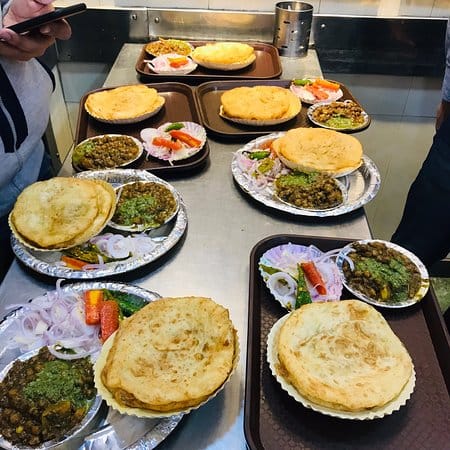Jantar Mantar

Jantar Mantar, a living proof of India's contribution to scientific endeavours, stands as a series of architectural marvels spread across various cities like Delhi, Jaipur, Ujjain, and Varanasi. Built by Maharaja Jai Singh II of Jaipur in the early 18th century, they are both scientific instruments as well as architectural wonders.
History
The genesis of Jantar Mantar lies in the intellectual curiosity and scientific acumen of Maharaja Jai Singh II, the visionary ruler of Jaipur who was deeply passionate about both astronomy and mathematics. He lived in an era in which accurate astronomical observations were crucial for various purposes, including agriculture, navigation, and astrology, and so Jai Singh II embarked on an ambitious project to construct observatories equipped with state-of-the-art instruments.
Work on the Jantar Mantar in Delhi began in 1724 and apart from Delhi, Jai Singh II oversaw the construction of Jantar Mantar observatories in several strategic locations spread across the whole of northern India. These sites were carefully chosen to ensure that clear and unobstructed views of the celestial sphere are available at every sigh. Each observatory boasted a unique array of instruments meticulously designed to measure and monitor celestial phenomena.

The architecture of Jantar Mantar is a harmonious blend of scientific precision and aesthetic. The instruments, crafted from stone and marble, exhibit remarkable craftsmanship and attention to detail. The structures themselves are arranged in a symmetrical layout, showcasing the meticulous planning and geometric precision underlying their design.
Significance and Purpose
Jantar Mantar served as a hub of astronomical research and observation during its heyday. The instruments housed within these observatories enabled astronomers to track the movements of celestial bodies, measure time with remarkable accuracy, and predict astronomical events such as eclipses and planetary transits. Moreover, Jantar Mantar played a crucial role in advancing scientific knowledge and fostering intellectual exchange among scholars and astronomers of diverse backgrounds at the time.
The instruments at Jantar Mantar include sundials, giant triangular gnomons, celestial globes, and structures for measuring time and tracking celestial bodies. Among the most notable instruments is the "Samrat Yantra" or "Supreme Instrument," a massive sundial capable of measuring time with astonishing precision. Another remarkable feature is the "Jai Prakash Yantra," an equatorial sundial that allows astronomers to determine the positions of celestial objects with remarkable accuracy.
The specific structures present at the New Delhi Jantar Mantar are the Samrat Yantra, the Jai Prakash Yantra, Rama Yantra, Misra Yantra, Shasthana Yantra, Kapala Yantra, and Rasivalaya Yantra.

Samrat Yantra (Supreme Instrument):
The Samrat Yantra is one of the largest sundials in the world, designed to get a precise measurement of time. Its massive triangular gnomon casts a shadow on the calibrated marble floor, thus indicating the time of day with remarkable precision. It can also be used to determine the declination of the Sun. This instrument showcases the advanced understanding of celestial mechanics and timekeeping in ancient India. Its sheer size and intricacy highlight the ingenuity of the astronomers and engineers who constructed it in collaboration with each other.
Jai Prakash Yantra (Light Instrument):
The Jai Prakash Yantra consists of two concave hemispherical bowls positioned in such a way that they align with the celestial sphere. Astronomers use this instrument to measure the altitude and the distance of celestial objects, enabling accurate observations of both stars and planets. Its design reflects a deep understanding of optics and geometry, allowing astronomers to track the movements of celestial bodies with precision.
Rama Yantra:
The Rama Yantra is a cylindrical in shape with a pillar at its center. Its design facilitates the measurement of the longitude and latitude of stars and planets. Like other instruments at Jantar Mantar, the Rama Yantra underscores the commitment of ancient Indian astronomers to the accurate observation and recording of celestial phenomena. Its cylindrical shape and calibrated markings enable astronomers to make precise measurements.
Misra Yantra (Mixed Instrument):
The Misra Yantra is a combination of several instruments, including a sundial and various geometric structures. It is used for a range of astronomical calculations, including the determination of the time, declination, and azimuth of celestial objects. The Misra Yantra exemplifies the versatility of the instruments at Jantar Mantar, incorporating multiple functionalities into a single structure. Its complex design reflects the sophistication of Indian astronomical knowledge and the ingenuity of its creators.
Shasthana Yantra (Platform Instrument):
The Shasthana Yantra consists of a platform with multiple levels and geometric markings. It is used for conducting astronomical observations and measurements, particularly those related to the positions of the sun such as diameter or declination. This yantra provides astronomers with a stable platform for making precise observations and calculations. Its elevated design allows for unobstructed views of the sky, enhancing the accuracy of astronomical measurements.
Kapala Yantra (Bowl Instrument):
The Kapala Yantra is a hemispherical bowl with markings for measuring the change of one coordination system relative to another. Astronomers use it to track the positions of stars and planets across the night sky. This instrument demonstrates the practical application of geometric principles in astronomical observation. Its bowl-shaped design collects light from celestial bodies, allowing astronomers to make precise measurements of their positions.
Rasivalaya Yantra (Zodiac Instrument):
The Rasivalaya Yantra is a series of circular rings with markings representing the celestial equator and the paths of various celestial bodies. Astronomers use it to study the movements of stars, planets, and other celestial objects as they cross the meridian. Its concentric rings and calibrated markings enable astronomers to track the positions of celestial bodies with respect to the constellations of the zodiac.
Legacy and Preservation:
Despite the passage of centuries and significant advancement in science, Jantar Mantar continues to inspire awe and admiration among visitors from around the world for it gives us a peek into the life of the time gone by. Recognizing its historical and cultural significance, the Jantar Mantar site in Jaipur has been designated as a UNESCO World Heritage Site, ensuring its preservation for future generations.
Beyond their architectural and scientific importance, the Jantar Mantar observatories are a tangible reminder of India's enduring commitment to the pursuit of knowledge and understanding of the cosmos. They stand as monuments to human ingenuity and the relentless quest for truth that transcends time. Built with meticulous precision and imbued with a sense of wonder, these architectural marvels continue to captivate the imagination of all who visit them.
Nearby Attractions

Janpath Market
Janpath Market, situated next to Connaught Place, invites visitors with its vibrant atmosphere and an array of shops. From clothing and accessories to handicrafts and souvenirs, the market's bustling streets are lined with stalls, boutiques, and vendors offering a truly wide range of merchandise. Bargaining is an integral part of the Janpath experience, adding to the excitement as shoppers negotiate prices for colourful textiles, intricate jewellery, and handcrafted items that reflect India's rich cultural heritage. Fashion enthusiasts are drawn to the market's ethnic range, including flowing skirts, embroidered tops, tribal jewellery, and funky accessories. Amidst the bustling streets, visitors can also enjoy a variety of cafes, food stalls, and street vendors offering delicious culinary delights, including the famous Depaul's Cold Coffee. Whether browsing for souvenirs, indulging in street food, or simply soaking in the vibrant ambience, Janpath Market promises an experience that encapsulates the very spirit of Dilli.

Connaught Place
Connaught Place, colloquially known as CP, is the commercial hub of New Delhi. Designed by British architect Robert Tor Russell in the early 20th century, it is characterized by its iconic white Georgian-style buildings arranged in concentric circles. CP is divided into inner and outer circles, with intricate artery like roads connecting it to various parts of the city in all directions. Connaught Place is not only a shopping paradise but also a landmark in itself
The Inner Circle of Connaught Place houses upscale retail outlets, luxury brands, restaurants, cafes, and bars. Here, visitors can explore a diverse range of shopping options, from designer boutiques to traditional Indian markets. In contrast, the Outer Circle of Connaught Place offers a mix of commercial and office spaces, interspersed with eateries, bookshops, and travel agencies. The central park houses aa giant Tricolour and provides a welcome respite from the bustling streets, offering visitors a tranquil space to relax and unwind.
Connaught Place is not only a shopping and dining destination but also a cultural hub where art, music, and entertainment thrive. The area hosts various events, exhibitions, and both the inner and outer circle are littered with street performers putting on a show for the audience throughout the year, showcasing the city's vibrant music and dance scene. Connaught Place epitomizes the spirit of Delhi, blending historical charm with modern amenities.

Agrasen ki Baoli
Agrasen ki Baoli is a serene stepwell steeped in history and mystique and also, Bollywood movies. Believed to have been built during the Mahabharata era by the legendary king Agrasen, this ancient stepwell captivates visitors with its architectural grandeur and sombre ambiance. The baoli's symmetrical layout, intricate carvings, and architectural details are a testament to the craftsmanship of a time gone by.
Food Near Jantar Mantar
South Indian Food Stall
Located right outside Jantar Mantar, this generically named food establishment has become an integral part of the economy that revolves around the Jantar Mantar. It was established in 1987 by a man named Keshavan Kutty and to this day, it serves famous dishes such as Mysore Masala Dosa, Chhole Bhature, Idli-Vada Sambhar at meagre rates of less than 100 bucks. Do give it a try if you venture out to Jantar Mantar

Sita Ram Diwan Chand and Radhe Shyam Subhash Kumar
Sita Ram Diwan Chand and Radhe Shyam Subhash Kumar are both renowned eateries in Delhi known for their delectable chole bhature, a popular North Indian dish. These establishments have garnered a loyal following over the years for their flavorful preparations and quality ingredients.
Located in Paharganj, Old Delhi, Sita Ram Diwan Chand has been serving mouthwatering chole bhature since 1950. Their chole, made from chickpeas cooked in a blend of spices, is known for its rich flavor and perfect consistency. Paired with fluffy fried bhaturas that contain specks of paneer, it's a favorite among locals and tourists alike. Its competitor resides in its vicinity- Radhe Shyam Subhash Kumar is another well-known destination for chole bhature enthusiasts. With its crispy bhaturas tangy chole and arguably the best dhaniya-pudina chutney in town, this eatery has earned a loyal customer base over the years. Opened in 1964, it continues to uphold its tradition of serving high-quality, flavorful chole bhature that keeps customers coming back for more.
Both Sita Ram Diwan Chand and Radhe Shyam Subhash Kumar have two of the best offerings of Chhole Bhature in all of Delhi. Although not the healthiest, it certainly makes for a wonderful breakfast or lunch option if consumed occasionally.
Beverage Stall next to South Indian Food Stall
Next to the cheap and delicious South Indian Food Stall, a vendor sells milkshakes using seasonal fruits such as Chikoos, Masala Chai, Hot Chocolate, Green Tea and Kesar-Badam milk. It is well worth a try if you're around
Transport Options
Transportation options to reach Jantar Mantar in New Delhi, India, are diverse, owing to its central location in the heart of the city.
The Delhi Metro, as usual, is the most efficient way to reach Jantar Mantar. The nearest metro stations are either Rajiv Chowk, which is located at Connaught Place, or Janpath, either of which are just a short walk away from Jantar Mantar. Rajiv Chowk is a major interchange station on the Yellow Line and the Blue Line, making it easily accessible from various parts of Delhi and the National Capital Region (NCR). Janpath on the other hand falls on the violet line, so choose whichever seems more convenient to you. Delhi Transport Corporation operate several bus routes that pass through Jantar Mantar- 73, 280, 281, 327, 340, 384, 390, 451, 602 and RL-77.
Visitors driving their own vehicles can reach Jantar Mantar via Connaught Place. However, parking may be limited in the vicinity, so it's advisable to use public transportation whenever possible. One can also use the variety of transport options available on apps such as Ola and Uber since Jantar Mantar is located in an area that is not prone to constant bumper to bumper traffic.
Timings and Ticket Prices
Jantar Mantar welcomes visitors throughout the week from 9:00 AM to 5:00 PM. This schedule allows ample time for tourists and locals alike to explore the various astronomical instruments and architectural marvels housed within the complex. It remains open on all days, including weekends and public holidays. The entry fee for Jantar Mantar is quite affordable- Indian citizens can enter for a nominal fee of around INR 5 to INR 25, while foreign tourists are typically charged around INR 100 to INR 200. Prices vary based on factors such as age, student status, or special exhibitions, so it's advisable to check the latest rates before planning a visit. Additionally, children below 15 are allowed to enter free of cost.

Comments ()